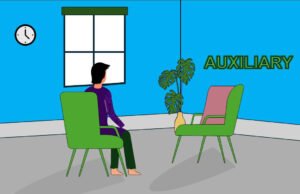
Cognitive Behavior Therapy (CBT): A Complete Guide to How It Works and Why It’s Effective
Cognitive Behavior Therapy (CBT) is one of the most widely researched and effective forms of psychotherapy used around the world today. It helps individuals identify negative patterns in their thoughts (cognitions) and behaviors, and then replace them with healthier, more adaptive alternatives. Whether you are struggling with anxiety, depression, or stress, CBT provides practical tools to manage challenges and improve overall mental health.
In this blog, we will break down what CBT means, how it works in therapy sessions, its duration, the types of mental health issues it can address, and the different ways it can be applied.
What is Cognitive Behavior Therapy (CBT)?
CBT is based on the idea that our thoughts (cognitions), behaviors, and emotions are closely connected. The way we think directly influences how we feel and act.
Cognition (Thoughts): These are our internal beliefs or interpretations of situations. For example, if you think, “I always fail at everything”, you will likely feel sad or hopeless.
Behavior (Actions): These are the things we do in response to our thoughts and feelings. For instance, if you believe you will fail, you may avoid trying new things or stop putting effort into your work.
CBT helps individuals recognize these unhelpful thought patterns and behaviors, and gradually replace them with more balanced, realistic, and constructive ones.
How Does CBT Work?
A CBT therapist acts as a guide, helping clients:
Identify Negative Thoughts: Recognizing recurring negative or distorted thoughts such as “Nobody likes me” or “I can’t handle stress.”
Challenge and Reframe: Questioning the truth of these thoughts and reframing them into healthier perspectives. Example: replacing “I always fail” with “I didn’t succeed this time, but I can improve with practice.”
Behavioral Techniques: Encouraging gradual exposure, role-play, journaling, or problem-solving exercises to change unhealthy behaviors.
Skill Building: Clients learn coping strategies such as relaxation techniques, mindfulness, and self-monitoring.
Through repeated practice, CBT empowers people to develop healthier thinking patterns and make positive lifestyle changes.
Learning to Solve Problems Independently
One of the most powerful aspects of CBT is that it equips clients with lifelong tools. Over time, individuals don’t just rely on the therapist—they learn to:
Recognize distorted thinking on their own.
Apply problem-solving techniques in daily life.
Manage stress and emotional difficulties independently.
This makes CBT not just therapy, but also a self-help tool for long-term well-being.
Duration and Session Structure
Session Length: Typically 45 to 60 minutes per session.
Duration of Treatment: On average, CBT lasts between 8 to 20 sessions, depending on the severity of the problem.
Short-Term and Goal-Oriented: Unlike some other therapies, CBT focuses on achieving practical, measurable results in a relatively short period.
Mental Health Problems Treated with CBT
CBT is highly versatile and has been proven effective for a wide range of psychological issues. Some of the most common include:
Anxiety Disorders (Generalized Anxiety Disorder, Social Anxiety, Panic Disorder, Phobias)
Depression and Persistent Low Mood
Obsessive-Compulsive Disorder (OCD) and Exposure & Response Prevention (ERP)
Post-Traumatic Stress Disorder (PTSD)
Panic Attacks and Panic Disorder Management
Sleep Problems and Insomnia
Addiction and Substance Abuse
Stress and Anger Management
Relationship and Marriage Counseling
Child and Adolescent Behavioral Problems
Eating Disorders (Anorexia, Bulimia, Binge-Eating Disorder)
Sexual Wellness and Intimacy Issues
Chronic Illness and Pain Management
Workplace Stress and Burnout
School-Based Mental Health Issues
Because of its evidence-based approach, CBT is often the first-line treatment recommended by psychologists and psychiatrists.
How Can CBT Be Applied?
CBT can be practiced in different formats depending on the client’s needs:
Individual Therapy: One-on-one sessions with a therapist, focusing on personal challenges and customized strategies.
Group Therapy: A therapist works with a group of individuals facing similar problems. This format provides peer support and helps clients learn from shared experiences.
Online CBT: Virtual therapy sessions via video calls, which make mental health support more accessible.
Final Thoughts
Cognitive Behavior Therapy (CBT) is more than just a treatment method—it’s a structured and practical way of learning to think and act differently in life. By addressing both thoughts and behaviors, it helps people not only recover from mental health issues but also build resilience for the future.
If you are dealing with stress, anxiety, depression, or other mental health challenges, CBT could be a powerful step toward healing. With the right guidance, you can learn to manage your thoughts, change unhelpful behaviors, and live a healthier, more fulfilling life.

